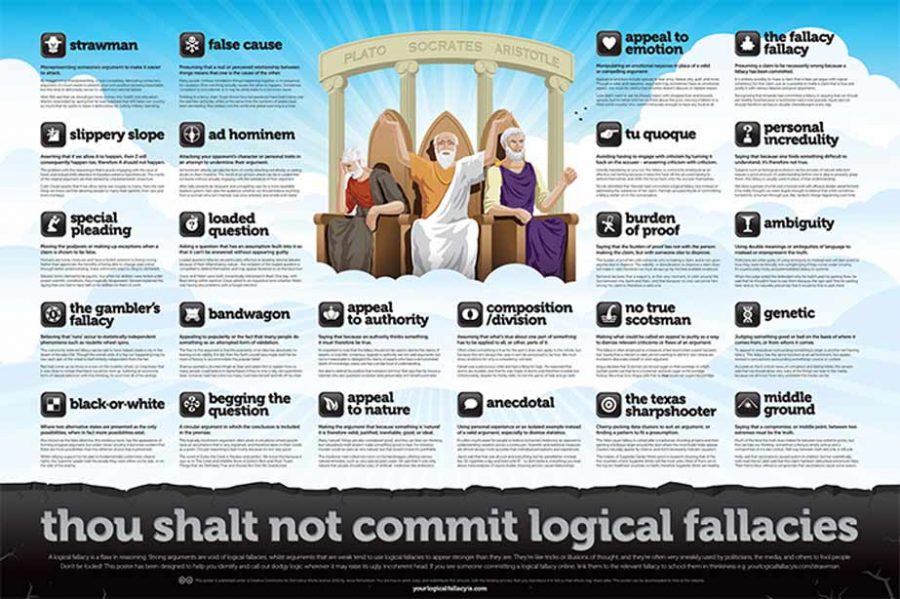Be a Smarter Reader
Understanding Logical Fallacies
April 30, 2015
This article is the best article that has ever been written on logical fallacies because all others aren’t as good. Because the previous sentence is slightly confusing, the rest of the article will also be confusing. You either love this article or you hate it. Your arguments against it are invalid and useless because you are most likely a homosexual. Join the 99.99% of readers and enjoy this article!
Obviously, all of that is false. except for the fact that this article is on logical fallacies.
What is a logical fallacy? In essence, it is an argument that sounds like it makes sense, when in reality it makes absolutely no sense at all, kind of like Alice in Wonderland or the ending of the TV show Lost. This quasi-logic is more prevalent than you may think. Here are the top 6 logic fails you probably hear (and use) in a majority of arguments.
1. Circular Reasoning: This is when your premise is used to support your conclusion which is used to support your premise, which supports your conclusion, etc. Basically, you have no evidence at all, and the initial assumption of your argument still has no support. Example: “This article is the best because all others aren’t as good.” I haven’t really proven anything; I just said my premise again as my conclusion.
2. False Dilemma: There are only two outcomes or solutions. It is very black-or-white, and ignores the possibility that there are other ways of doing things. For example, “you either love this article or you hate it.” Obviously, you can love it or hate it, but one also has the option of liking it, laughing about it, laughing at it, and not even reading it (although I doubt that last one applies to you . . . ).
3. Ad Hominem: This fallacy is when you attack the person instead of the argument. For example, “your arguments are invalid because you are most likely a homosexual”. Your homosexuality is irrelevant in determining whether or not your arguments are valid. They are logical, or they aren’t. Sexual orientation has nothing to do with it.
4. Bandwagon: This one is the “everyone is doing it so you should believe me” fallacy. They use popularity to convince people to join. Example: “99.99% of readers like this article, so you should too.” Another famous one is this: everyone else is jumping off the cliff, so I want to too! (Note: The Wrangler staff does not support cliff diving in any way, shape, or form.)
5. Slippery Slope: This is when a speaker uses a hypothetical situation and then states the worst possible outcome for that scenario. Here is an example many students face: if I fail one test, then I fail the class. If I fail the class, then I don’t get into Harvard and I will never meet my wife/husband. If I never meet my wife/husband, then my kids will never be born. If my kids are never born, then they cannot cure cancer. If they cannot cure cancer, then the girl who was going to save the world from global warming is going to die of lung cancer. If global warming isn’t stopped, then all of humanity will die. Thus, to save humanity, I must pass this test.
6. Fallacy of Composition: This fallacy is when a person assumes what is true about a part of something is true for the whole thing. For example, because the first sentence of this article was slightly confusing, the rest of the article will be confusing. Hopefully, this has not been the case.
Now, dear reader, armed with the knowledge to sniff out fallacies in your everyday life, you can hopefully win more arguments and think about what the mass media tells you. Riley Rose (11) believes that, for teenagers, “the bandwagon fallacy is the most prevalent, so if writers use that fallacy, then teens will be more susceptible.” Teenagers, like everyone, can fall victim to these fallacies, but by learning about them, you hopefully can find the logic in an argument and be a smarter reader.





















